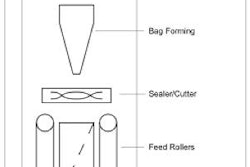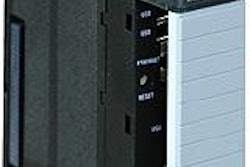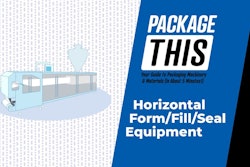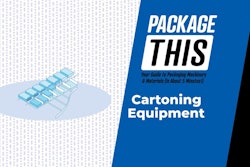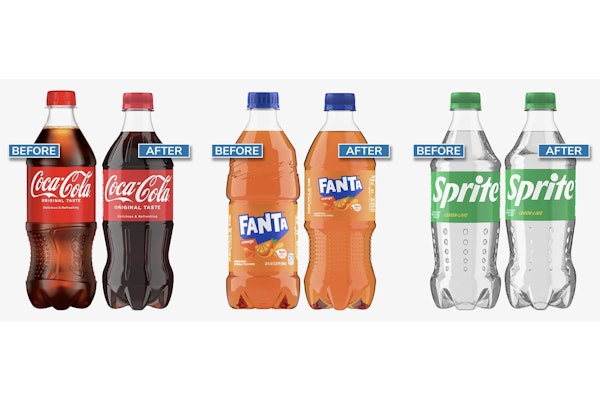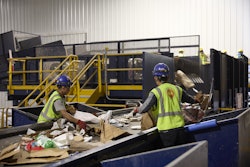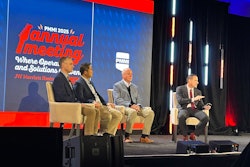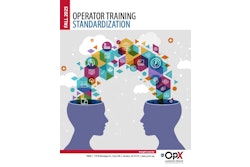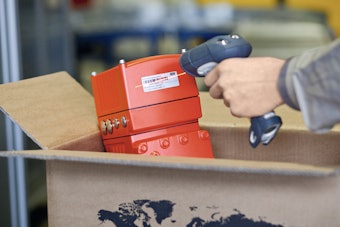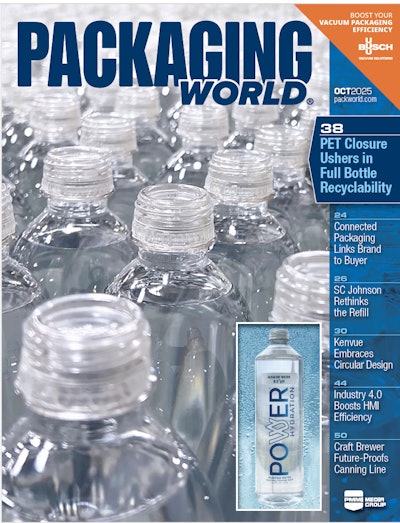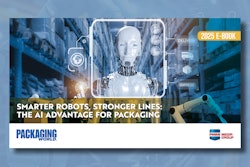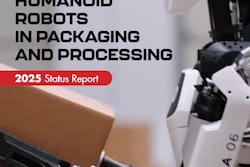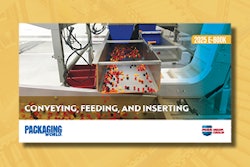With a goal of more tightly integrating processing and packaging from a controls and automation standpoint, the Make2Pack initiative continues to gain momentum. Big believers in the benefits to be gained are three managers at Procter & Gamble: Skip Holmes, associate director corporate engineering; Dave Chappell, corporate technical section head; and Rob Aleksa, corporate machine control section head. Packaging World caught up with these thought leaders at P&G’s innovation center outside of Cincinnati to learn where they think Make2Pack is headed.
PW: Did OMAC Packaging Workgroup and its drive toward standards shape the formation of Make2Pack?
Aleksa: Creating a “standard” was never really the idea behind the Packaging Workgroup. Our goal was influencing the industry through guidelines, and we were making progress, too. But there are thousands of OEMs out there, so we started asking ourselves how could we influence so many OEMs in such a broad array of vertical industries, from food to beverage to pharma to health and beauty, and so on. And the answer was to begin thinking in terms of a real standard, something through IEC or ISA, instead of just guidelines. Here at P&G we were lucky enough to have Dave Chappell, who had been so influential in developing the S88 standards [which define common models and terms for describing and defining batch manufacturing systems]. So it was pretty easy, from a P&G standpoint, to make the case that we ought to tie packaging into S88 in the interest of achieving more horizontal integration. What we started looking for is something that would bridge the process world with the world of discrete manufacturing. It wasn’t just P&G. SAB Miller, Unilever, Hershey, and other end-users were and are just as involved.
Chappell: When Rob noticed how parallel the OMAC Packaging Workgroup and S88 Part 5 objectives were, particularly their focus on standardized terms for machine states, he began to ask why couldn’t the two efforts be joined together? That broke down, for the first time, the processing and packaging silos.
PW: In what sense are they silos?
Chappell: What I mean by “silos” is that the individuals who are responsible for automation on the process side think radically differently than those who automate the packaging side. On the process side, you don’t think of tank, pump, pipe, and valve as discrete pieces of machinery, you view them as parts of a system. That thinking doesn’t apply, or at least historically it hasn’t, on the packaging machinery side.
Aleksa: That’s what I noticed in the late 90s when I moved from the process control side of the business to packaging. As I tried to calibrate myself, it quickly became clear how non-standardized the software was on the packaging side compared to the process side. This approach makes it harder for us to integrate machines from different machine suppliers. There was much more industry-standard harmony on the process side, especially among the automation technology providers. End-user groups, too, were in place to share feedback that ultimately helped move the process control discipline forward. On the packaging machinery side, it was not quite so harmonious. That’s why we, and other end users, are spending so much time on driving improved software structures. It was the only way to bring integration to the machines in a packaging line.
PW: Is there any key accomplishment in the work done by the S88 committee that you’d like to duplicate in Make2Pack?
Chappell: S88 separated procedural control from process automation control. In the past, what you had was monolithic automation that intertwined the what to make and the how to make it. S88 took those two things apart. The advantage is that now, if you need to make a change to what you’re making, you don’t have to get inside and reprogram the how as well. You can just change the procedure and leave the process automation part alone. In our Make2Pack discussions, we’re recognizing the power of that separation and would like to duplicate it. The separation of procedure and process has great potential.
Aleksa: Make2Pack standards will also resemble S88 in their fundamental emphasis on standardized terminology for machine states. Part of the work being done by the Make2Pack group is the harmonization of machine states as defined by S88 and those defined in the machine state model developed by the OMAC Packaging Workgroup. The idea is to arrive at a standard software machine interface structure that makes sense to both worlds, processing and packaging.
PW: Have there been surprises along the way?
Chappell: “Discoveries” is the word I’d prefer. At the outset, for example, the “make” people and the “pack” people thought they knew all about how each other’s world operated. Once we got down to the details, we realized we couldn’t have been more wrong. The other discovery that continues to surprise us is that the more we look into this idea of harmonizing processing and packaging functions, the potential benefits grow in number and significance.
PW: Are you surprised by how cooperative end users—some of them direct competitors—have been in the Make2Pack initiative?
Chappell: For an effort like this to be successful, you need the end users. You saw it in S88. We worked with our biggest competitors on S88, and with Make2Pack we’re doing it again.
PW: How do you justify the investment in personnel’s time spent on Make2Pack?
Holmes: We either dedicate Dave’s and Rob’s time to do a whole lot of custom integration internally, or we invest in efforts like Make2Pack so that the custom integration won’t be needed in the first place. It requires some patience some times, but there’s no doubt about the bang for the buck. Once the upfront effort is complete and standards are developed, we’ll reap the benefits for a long time to come.
PW: What is a key benefit that your Make2Pack efforts will deliver?
Chappell: When we prepare a launch or a repackaging or just about any initiative, we have to design what the system behind that initiative is and determine the automation that’s going to drive it. We know how to do that, and we’re good at it. But it’s costly. What we’re beginning to see in Make2Pack is that it can reduce that cycle. By how much it’s not clear, but what does seem clear is that we can begin to put the business owners back in control. Currently, if a group of business managers—say, a brand manager, plant manager, project manager—have an idea, they have to involve the engineering department. And the first thing the engineers do is put constraints on the business managers’ idea by pointing out that you can only automate in a particular way because these two machines you’re looking at have profoundly different and incompatible automation designs. So the business managers have to modify their ideas to conform to existing automation constraints. Or they have to absorb exorbitant costs to have the engineers reprogram or customize or integrate. Make2Pack standards will foster greater interoperability, so the business managers can take control of projects without having to involve the engineering department as much. It gets back to the S88 model and that separation of procedure and control. That helped the business managers manage their projects and products without involving automation engineers every time they want to change something. That had a profound impact on speed to market and greatly improved business cycles. With the standards that we hope to see emerging from Make2Pack in place, machines can become more familiar to nontechnical people who don’t happen to be expert programmers.
PW: What kind of impact will Make2Pack have on personnel?
Chappell: We think our technical force—the people who maintain and support all the different equipment in the plants—will be much more efficient because all the automation will be done in a similar fashion. We’ll be able to have our process people support our packaging people, and vice versa. Instead of what we have now, where you go into a plant and there are packaging technicians and processing technicians, but they clearly occupy separate camps.
PW: What are end users that are active in Make2Pack seeking from packaging machinery OEMs?
Aleksa: We’d like packaging machinery OEMs to recognize that their piece of equipment needs to fit both horizontally and vertically into a complete, integrated system. It’s not an isolated machine. We’d like them to provide equipment that meshes horizontally with other packaging and processing equipment, as well as meshing vertically with business systems at the top of the enterprise.
Holmes: If OEMs would rely more on standard structures, it would be easier for us to get packaging machines with the functionality we want without having to give away our intellectual property. For example, suppose an OEM we work with has an algorithm that helps make a certain piece of machinery perform a specific function optimally. But we here at P&G may have our own proprietary algorithm that’s superior. If the OEM delivers a machine built on standard software structures, we can easily switch out their algorithm and replace it with ours. In a world lacking such agreed-upon standards, we’d have to spend a great deal of time reprogramming and customizing to bring that algorithm into the machine or we’d have to give our algorithm to the OEM and have them incorporate it in the machine. But that algorithm is our intellectual property. We’d rather not give it away.
Aleksa: We could go to OEMs individually and say, “We want you to provide this information or this type of structure.” And we could justify to each and every one why we need the information, how the information should be structured, and why we want it structured that way: eg., because it lets us do reliability or manage production. But going to them individually and repeatedly is a waste of time. And besides, we don’t want to give those things away. A better way is to create common structures and a framework of how OEMs can deliver information or structure a machine to make it easier for us to integrate in a very nonproprietary way. That’s what Make2Pack does, it works toward a standard structure. We can then take that and deliver that information without sharing with each and every OEM why we do certain things the way we do them.
Holmes: Look at it this way. Suppose I’m an end user that happens to prefer Technology Provider A. Along comes an OEM whose equipment I really like, but he happens to use Technology Provider B. In the past, we’d go to great lengths to have the OEM convert to our preference. Sometimes we would do this even when the business justification was marginal. In the future, as Make2Pack spreads within the machine builder industry, we will have the option to integrate machines into our manufacturing systems without necessarily changing the OEM’s control platform selection.
PW: What sort of deliverables are you hoping to produce and when?
Chappell: We plan to have a demo by end of June showing low-level automation components from multiple technology providers—sensors, actuators, drives, motors, HMI—all integrated horizontally regardless of whose controller controls them. We want to show multiple controllers integrated with digital devices allowing them to interact with no need for custom programming. This is possible because the software is hardware-independent. It will demonstrate the whole Make2Pack concept: making it easy to add a machine with a different controller yet still minimizing negative impact. Hopefully this will show how, right down at the plant level, you can have a lot of transparency. Low-level components providing the automation, the control, will be nearly interchangeable. We’ve never had that before. We want to be finished with our World Batch Forum report in December. When we hand it off to ISA, the idea is that it become a certified standard.
PW: What other benefits do you hope to reap from Make2Pack?
Holmes: Speed to market will be increased, whether it’s a new product, a line extension, or a change to an existing product. Weeks can translate into millions of dollars. Speed is absolutely crucial.
Aleksa: Integration will be easier and will cost less. When we work with a machine supplier today and tell him what we want in a machine, there’s a cost for that OEM to do what we ask. With more standardized structures, that time and cost are gone. Also with these standard structures, it becomes much easier to move information around.
Chappell: It will reduce the cost of equipment, both processing and packaging. And it will give our businesses more choices. Before, we were limited in terms of what would work together. Now we will be freer to choose, to interchange, and if something goes wrong, we can take something out and replace it with a standardized module without having to retool or reprogram.
Aleksa: Validation in pharmaceutical applications should be easier. Any time you need to validate in a regulatory environment, the more standards the better because you don’t have to spend time with unique machines or systems and validate each one of those. If a standard is validated and you use it, you reduce time and engineering costs.
Holmes: What that means from my standpoint is that I can focus valuable engineering resources on developing a breakthrough innovation instead of having engineers spend time doing integration tasks.
Chappell: We’ll be able to reduce the time required to deliver projects and reduce the level of expertise required to be successful. Rather than having to constantly test, design, build, and perfect, our model will be built on components that are predesigned, prebuilt, and preperfected.
Aleksa: We hope Make2Pack is a catalyst that will take us closer to what you might call a machinery utopia. It’s a first step toward getting over this hurdle in the machinery world that’s built on two assumptions: that everybody has to do their own thing and that standards are bad. Too often suppliers assume that if everything is standardized and wide open, if there are no “black boxes,” then OEMs and technology providers won’t be able to differentiate themselves. Embracing standards doesn’t have to involve the surrender of intellectual property. We think the opposite is true, that suppliers will be able to focus on things that really differentiate their machines instead of churning out “mundane and repetitive” automation. I think there are real opportunities out there, and I think Make2Pack will be the catalyst that moves us closer to seizing them.
Chappell: We’d like to reach a point where we can have someone walk up to a machine with a PDA and, after authenticating they have the authority to interact with the machine, can use the PDA to understand what the machine is doing. If it is having a problem, we want people to be able to identify the problem and correct it with the PDA by issuing commands and receiving information back—as opposed to going to a custom graphic and bringing in programmers to understand why the machine isn’t working. It’s all about enabling our businesses to operate better. Managers will be able to interact with and understand the machines that operate under their watch. And if a machine is taken out and replaced by one from a different manufacturer, it doesn’t matter. The information needed is all there.
PW: Final remarks?
Chappell: This initiative addresses a fundamental problem in today’s manufacturing environment: Too much of what we buy is custom designed.
Aleksa: At P&G from a controls discipline perspective, we talk about providing our business managers with choices. This initiative will create an environment where they have those choices.
Holmes: Make2Pack will help us quickly integrate across the whole processing and packaging supply chain. Faster and simpler will be the key, plug and pack if you will. Engineering costs can go down as the need to customize is reduced. That’s what I see coming out of the Make2Pack initiative.
See sidebar to this article: The charter





